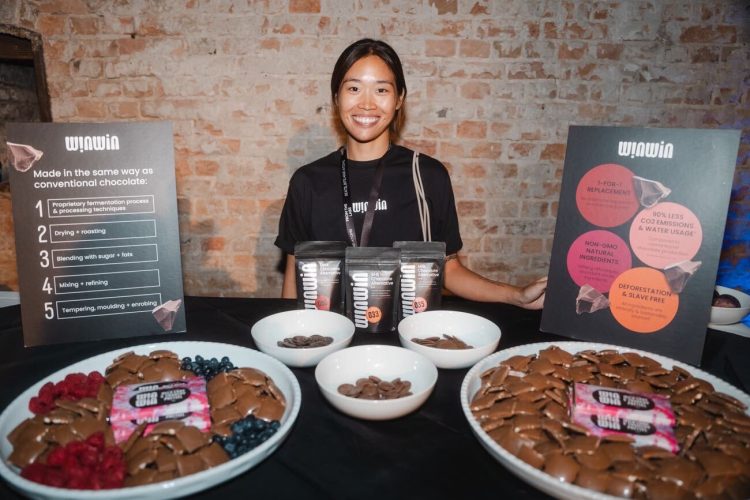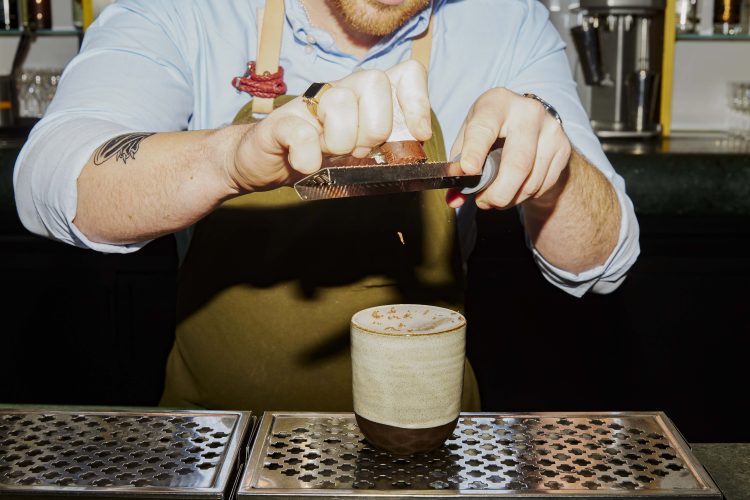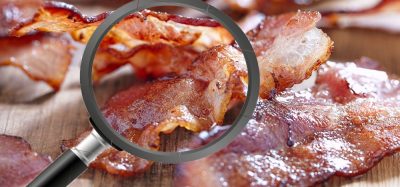Breaking the mould: a Win-Win solution to chocolate’s cocoa crisis
Posted: 4 July 2025 | Ben Cornwell | No comments yet
Against the backdrop of World Chocolate Day, this instalment of Ingredients for Change explores the current climate and challenges facing the cocoa industry and whether it’s time to rethink the traditional chocolate production model. New Food spoke with Ahrum Pak to learn how her startup aims to break the mould.
World Chocolate Day celebrates the ultimate confection – one that is a source of joy and comfort; nostalgia wrapped in foil. It’s not a time for reflection. But in 2025, the reality behind that sweet bite has become harder to ignore. Cocoa prices have skyrocketed, global supply is shrinking and the environmental and ethical costs are coming under sharper scrutiny. The industry is not just facing a rough patch; it’s facing a reckoning. At the heart of this cocoa crisis is a fundamental imbalance: the world wants more chocolate than the planet, and the current supply chain, can provide.
But in the midst of this uncertainty, one startup, Win-Win, is presenting a radical but timely proposition: what if chocolate didn’t need cocoa at all?
The cracks in chocolate’s foundation
Cocoa, the key ingredient in chocolate, is becoming increasingly scarce. Climate change, deforestation, disease and depleted soils are making cocoa farming less viable each year, with pest outbreaks and unpredictable weather wreaking havoc on yields. Most cocoa farmers don’t earn enough to invest in sustainable production, thus ecologically valuable forests are being lost at an alarming rate – over 80 percent of West Africa’s primary forests have already been lost, much of it cleared for cocoa plantations.
My hope is by doing what we do, we spark the conversation that maybe we can change the supply chain for everyone.”
Cocoa’s dramatic price increase reflects deeper cracks in the system: rising from a long-standing average of $2,500 per tonne in recent years to over $12,500 at its peak last year. Even after the initial surge, prices have remained well above pre-crisis levels. But that hasn’t translated into better conditions for farmers. In countries like Ghana and Côte d’Ivoire, price-setting mechanisms often prevent smallholders from benefitting from global market spikes, while the rising costs of fertilisers and pesticides continue to erode their margins.
This instability is already reaching consumers in subtle, and not-so-subtle, ways. Shrinkflation has become a common tactic for brands, involving cutting portion sizes while holding prices steady. This has led to frustration and a creeping distrust in familiar products.
As Ahrum Pak, Chief Strategy Officer and founder of the sustainable chocolate alternative startup Win-Win, puts it: “Shrinkflation is absolutely the worst, and it sucks when you open up a chocolate bar and just see less of it in there.”
And that, Pak believes, is just one symptom of a deeper problem; one that requires an entirely new way of thinking about chocolate.
Enter Win-Win: chocolate without the cocoa
Founded by Ahrum Pak and flavour scientist Dr Johnny Drain, Win-Win is pioneering a cocoa-free chocolate alternative.
The product is made using fermented, low-carbon cereals and legumes such as barley and rice – ingredients chosen for their abundance, adaptability and dramatically lower environmental impact.


Founder Ahrum Pak with Win-Win samples. Credit: Win-Win
This isn’t synthetic chocolate or lab-grown mimicry. It’s a reinvention rooted in natural processes. In much the same way as real chocolate, fermentation plays a key role in their process, unlocking rich, complex flavour profiles that evoke the familiar indulgence of chocolate.
The result is a product created with 80 percent less carbon emissions and up to 80 percent less water usage than conventional chocolate, but with the same satisfying melt and snap.
“Nutritionally, it’s actually really similar to chocolate. It’s all the fats and sugars that make chocolate really delicious.”
From sensory delight to scalable solution
What makes Win-Win’s product especially compelling is how seamlessly it integrates with existing systems. Their cocoa-free “choc” behaves like chocolate – it melts, it bakes, it blends. Available in both tempered and non-tempered formats, it works across everything from bars and brownies to glazes and ganaches. For manufacturers, it offers flexibility: some opt for full substitution, while others blend it with traditional chocolate to lower their footprint without changing flavour or label claims.
This adaptability is crucial as the industry seeks to shrink its environmental impact without alienating consumers. Ultimately, chocolate is as much about emotion as it is about taste; it carries deep cultural and sensory meaning, memories of birthdays, holidays, or comfort on a bad day.
Win-Win understands this deeply. Its team spent years refining the product, with scientists painstakingly adjusting fat content, flavour balance and texture to evoke that familiar, satisfying feeling.
“We’re trying to recreate that entire experience. So, if you’re biting into a brownie, how does it melt in your mouth? How does it coat your teeth? We make sure our products deliver that same experience you’re looking for,” Pak explains.


Win-Win’s products work across everything from bars and brownies to glazes and ganaches. Credit: Win-Win
But for Win-Win, the work doesn’t end there. The product is designed to evolve.
“It’s going to keep getting better, and we’re always on the lookout for new ingredients,” says Pak. “That journey will never stop for us. There are more sustainable ingredients out there, more local supply chains we need to tap into. The pursuit of perfection will always be there.”
And when it comes to taste, the proof is in the pretzel bar. Win-Win’s flagship salted caramel product consistently surprises people at trade events, with many unaware of its cocoa-free credentials until long after the first bite.
Rethinking the chocolate economy
Still, the question lingers: in creating a cocoa-free product, is Win-Win taking opportunity away from cocoa farmers?
Pak sees it differently. “We are not competing with the farmers, the supply of chocolate is actually going down,” she says. “For farmers, cocoa farming is no longer as profitable as it once was. So my hope is by doing what we do, we spark the conversation that maybe we can change the supply chain for everyone.”
Rather than displacing cocoa farming, Win-Win is responding to a widening supply–demand gap. Pak believes innovations like theirs can provide pressure relief for a system under strain, while sparking bigger conversations about equity, sustainability and value distribution.
We just can’t continue to extract from the land and from the farmers that we used before. So, companies like us will have to be there to fill the gap.”
In many ways, Win-Win is asking the industry to move beyond the binary of ‘traditional vs alternative’ and instead consider what balance looks like in a time of scarcity.
If cocoa is becoming rarer, why not reserve it for the products and people who value it most, and let sustainable alternatives take the strain elsewhere?
From disruption to distribution
That vision is already beginning to scale. Earlier this year, Win-Win announced a major partnership with Martin Braun, a global leader in bakery and confectionery ingredients. Its non-tempered dark and vegan milk products will be distributed across the Dach region (Germany, Austria and Switzerland), with their tempered products soon rolling out across wider European markets.
This momentum reflects growing interest from manufacturers seeking stability in their supply chains, and from consumers increasingly open to products that align with their values.
Pak is clear about the company’s ambition: “I think there won’t be any choice anymore for consumers and for the companies that we sell to because there is now a gap between the demand and the supply, and we need to fill that somehow. We just can’t continue to extract from the land and from the farmers that we used before. So, companies like us will have to be there to fill the gap.”
The goal is not to replace chocolate, but to ensure there’s still something to love when the traditional model can’t keep up.
Redefining indulgence
The world still wants chocolate. That’s not going to change. What is changing is how, and at what cost, we get it.
Win-Win’s cocoa-free choc doesn’t ask people to settle for less. It asks them to reimagine what indulgence can look like when it’s rooted in sustainability, equity and ingenuity. It shows that climate resilience and consumer pleasure aren’t mutually exclusive, and that the most satisfying chocolate might just be the one that gives something back.
So, this World Chocolate Day, maybe the question isn’t ‘milk or dark?’
It’s ‘what kind of chocolate future do we want to build?’
Enjoying the series? Why not read the previous instalment in the Ingredients for Change series, which explores scalable hunger relief solutions in African classrooms.
Reach out!
As part of our Ingredients for Change series, we are always on the lookout for the next wave of innovators and unsung heroes making a difference in the food industry.
If you know of individuals, companies, or initiatives advancing food safety, pushing for regulatory change, or transforming other aspects of the industry, we’d love to hear from you.
Contact our Assistant Editor Ben Cornwell ([email protected]) with your suggestions and help us spotlight the voices and solutions shaping the future of food!
Related topics
Food Security, Ingredients, Product Development, Supply chain, Sustainability, World Food









